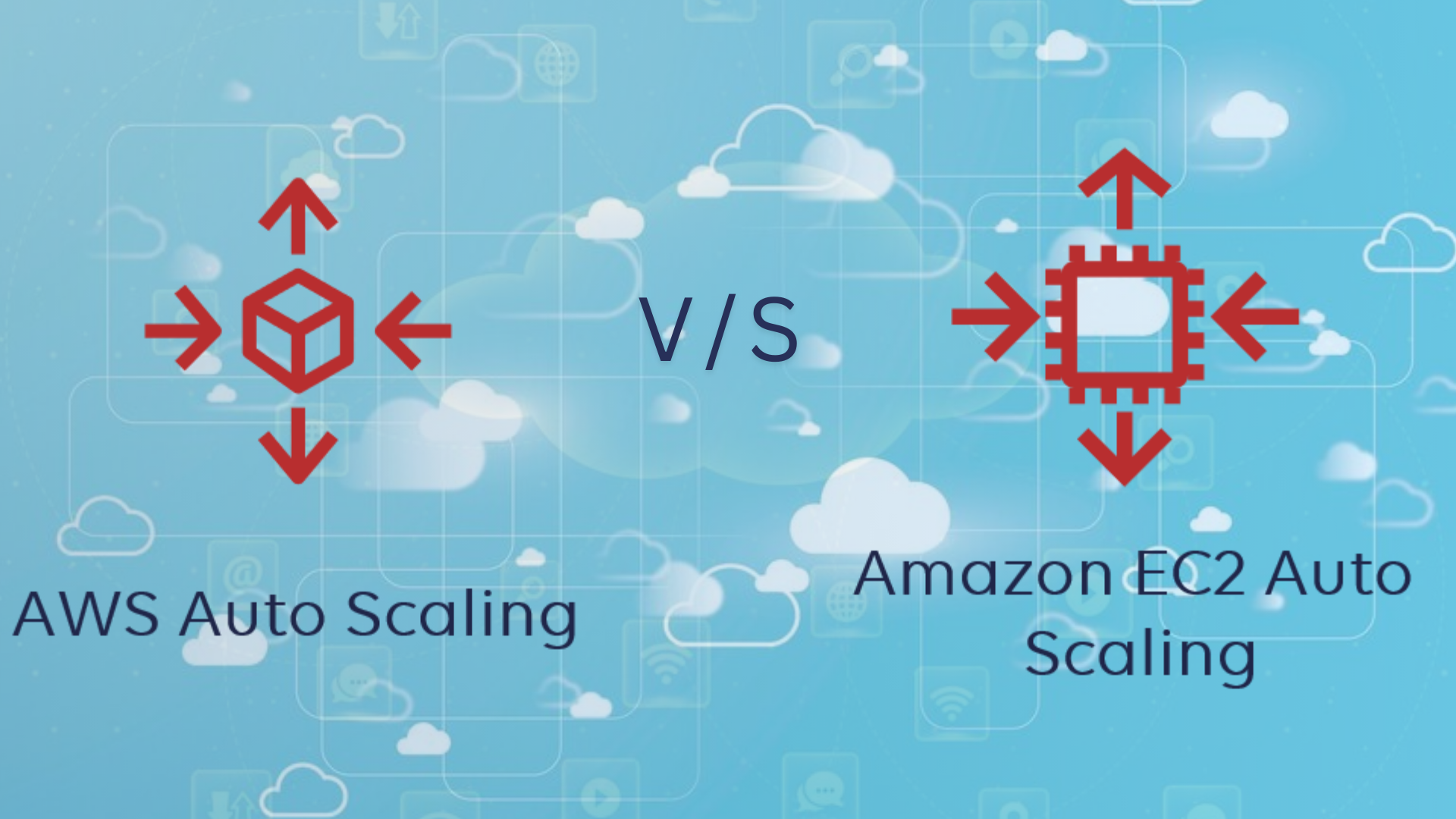AWS Autoscaling vs EC2 Autoscaling: in-depth comparison
 Ena Vaghela
Ena Vaghela
Introduction
Have you ever faced sudden traffic on your website or application? If so, then you know the stress of ensuring everything runs smoothly. This demonstrates the need for efficient cloud scaling. This is where AWS autoscaling and EC2 autoscaling come into the picture. In this digital era, scalability is vital to maintaining application performance.
If you are unsure where to start or what to choose, don't worry; you have already found the solution - this article on “AWS autoscaling vs EC2 autoscaling”. In this article, you will explore two powerful tools AWS and EC2 autoscaling offer to manage such challenges: AWS Auto Scaling and EC2 Auto Scaling.
Overview of AWS Auto Scaling and EC2 Auto Scaling
Before comparing AWS autoscaling vs. EC2 autoscaling, it is important to understand AWS and EC2 autoscaling. Understanding them will help you identify which Amazon autoscaling service will suit your needs.
AWS autoscaling
The AWS Auto Scaling monitors application performance and automatically scales resource capacity at the lowest possible cost. It provides an auto-scaling console for dashboard management. Users can create dynamic or predictive scaling plans, prioritizing availability, cost-effectiveness, or a balanced approach. Auto Scaling AWS supports scaling for Amazon EC2 Auto Scaling Groups, EC2 Spot Fleet requests, ECS, DynamoDB, and Aurora. It also facilitates seamless cases, assignments, or reserved capacity adjustment, improving operational efficiency and cost control.
EC2 Autoscaling
Amazon Elastic Compute Cloud (EC2) provides a service that manages the number of EC2 instances needed to run applications automatically. This helps ensure you have the necessary number of EC2 instances running to manage your application load and minimize costs. You can also set a maximum number of instances for an autoscale group - EC2 autoscale ensures that the group stays within this limit. It consists of three parts: a launch template that knows what to scale, scaling policies that determine when to scale, and an Autoscaling Group (ASG) that decides where to launch EC2 instances.
In-depth comparison: AWS Autoscaling vs EC2 Autoscaling
Here is a comparison of the different features of AWS and EC2 autoscaling, which will help you choose the best one.
Scope
AWS Auto Scaling offers a more comprehensive way to manage the scaling of multiple AWS services. Along with EC2 instances, this comprises ECS tasks, DynamoDB tables and indexes, and Aurora copies. Therefore, AWS Auto Scaling provides a more comprehensive approach to scaling different types of resources. In contrast, EC2 Auto Scaling is specifically designed to manage the number of EC2 instances. The main concern is ensuring you have the appropriate number of EC2 instances running to support your application workload.
Scaling Resources
AWS autoscaling can handle larger resources like EC2 instances, ECS workloads, DynamoDB tables, and Aurora replicas for relational databases are all potential ways to scale. Additionally, it can support containerized applications. This allows AWS autoscale to handle complex applications running on various AWS services. On the other hand, In EC2 autoscaling, the primary managed resource is an EC2 instance. EC2 instances can be added or removed from your application, allowing for flexibility in scaling.
Launch Configurations
AWS Auto Scaling only applies to EC2 instances and employs service-specific settings to scale ECS tasks, DynamoDB tables, and Aurora databases. Meanwhile, EC2 autoscale requires launch settings or launch templates to define how EC2 instances are launched, including instance type, AMI, key pairs, and security groups.
Integration with Load Balancing
AWS Auto Scaling supports integrated scaling with ELB, ALB, and NLB. It extends its integration to other services, such as DynamoDB and Aurora, ensuring that the entire application stack can scale as demand changes. while EC2 Auto Scaling is integrated with AWS Elastic Load Balancing (ELB/ALB), which distributes incoming application traffic across multiple EC2 instances for availability and fault tolerance.
Integration with CloudWatch
AWS Auto Scaling uses CloudWatch in a similar way but across a wider range of AWS services. This enables AWS Auto Scaling to automate the scaling operations of different resources while maintaining optimal performance and cost efficiency. On the other hand, EC2 Auto Scaling and AWS Auto Scaling use Amazon CloudWatch to monitor resource usage and application performance metrics. EC2 Auto Scaling relies on CloudWatch to trigger scaling actions based on policies defined for EC2 instances.
Use Case
AWS Auto Scaling is designed for more complex use cases that require coordinated scaling of multiple AWS resources. This tool is particularly beneficial for applications that combine compute, container instrumentation, database, and storage services. Its benefits include providing unified scaling approaches that optimize performance and cost control. In contrast, EC2 Auto Scaling is best for applications that require dynamic scaling of EC2 instances on demand. This technique is appropriate for less complex scenarios where the availability and management of EC2 instances are crucial.
Conclusion
I hope your purpose of landing on this article to understand the significant difference between AWS autoscaling and EC2 autoscaling is served. From the points in the AWS autoscaling vs EC2 autoscaling comparison, there is no doubt that both provide powerful Autoscaling services. Both have their own capabilities and limitations, but every project has its own custom requirements. As you know, you can gain perks from AWS and EC2 autoscaling for your business, so choose them wisely. Partnering with an AWS managed service provider can be very beneficial if you want more in-depth support in managing your AWS services. Start your autoscaling journey now.
Subscribe to my newsletter
Read articles from Ena Vaghela directly inside your inbox. Subscribe to the newsletter, and don't miss out.
Written by
